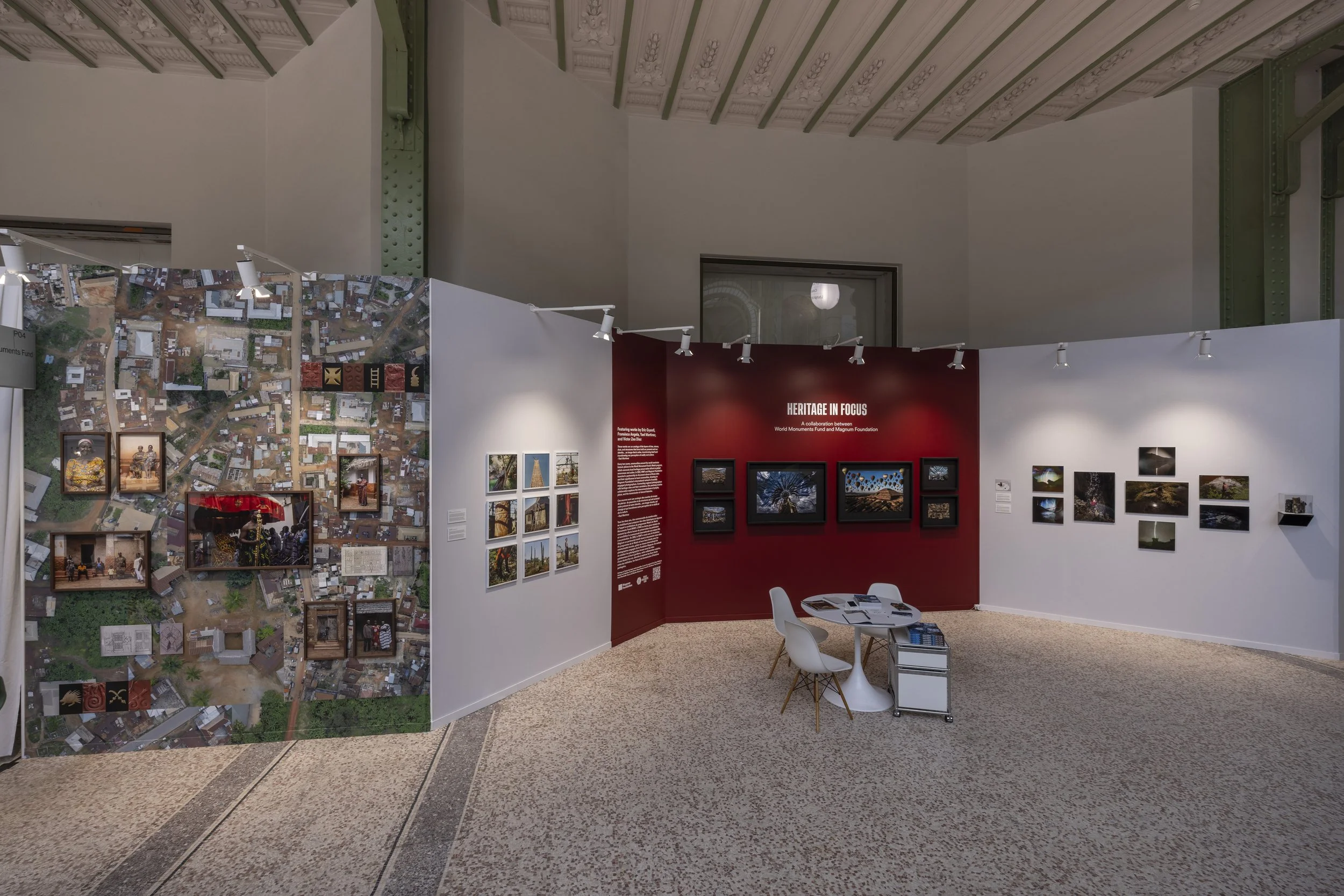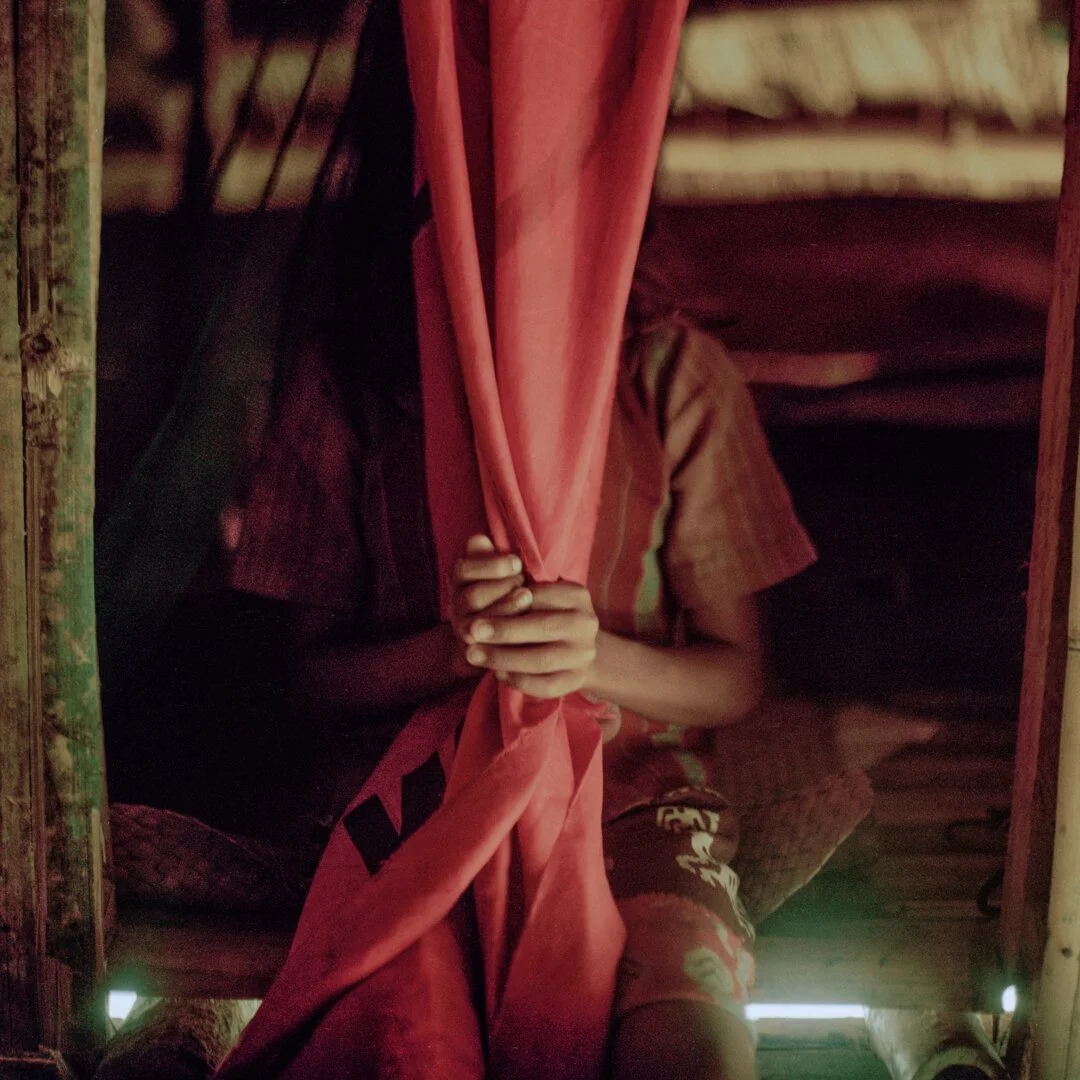Highlights from Heritage in Focus at Paris Photo
Photo credit: David Atlan
These works are “an analogy of the layers of time, stones, dust, and structures that have built our present and our identity…an image that is alive, transforming itself and transforming our perception of reality and culture.” –Yael Martínez
Every two years, communities around the world nominate historic places to the World Monument Fund’s Watch program, which connects local heritage preservation efforts to global awareness and action. In 2022, WMF and Magnum Foundation launched a partnership to document eleven of these sites and their significance to local communities, drawing on Magnum Foundation’s international network of socially engaged photographers. Connecting regional photographers with heritage sites and their caretakers, this yearlong creative collaboration explores the interconnectedness of people, place, and the transmission of shared histories.
Earlier this month at Paris Photo, World Monuments Fund and Magnum Foundation were excited to feature four of these projects in a special exhibition Heritage in Focus. Curated by Magnum Foundation Executive Director Kristen Lubben, the exhibition featured selected works from four photographers: Fransisca Angela, Eric Gyamfi, Yael Martínez, and Víctor Zea (in partnership with Diego López Calvín). See highlights below!






About the featured projects:
Victor Zea Diaz with Diego López Calvín | The Legacy of the Stone, Yanacancha-Huaquis Cultural Landscape, Peru
In the Andes, ancient systems of canals and dams ensured that pre-Inca communities had enough water during the dry season. Now, their descendants are reviving this technology to adapt to worsening droughts caused by climate change. The Legacy of the Stone portrays this relationship between people and their ancestral land as they preserve the past to build their future. Like the eyes of the mountain, pinhole cameras trace the sun’s path, echoing ancient solar observatories.
Fransisca Angela | La Uma/Our Home, Sumba Island, Indonesia
With their towering roofs, traditional Sumbanese homes represent a distinct architectural style rooted in religious symbolism. But these wooden buildings are extremely vulnerable to fire, especially as climate change leads to longer dry spells, and more work is needed on how best to safeguard communities from this major threat. La Uma/Our Home is an intimate reflection on loss and life in Wainyapu after a 2022 fire destroyed 80% of the village’s historic houses.
Yael Martínez | Mixcoatl: Cloud Serpent, Teotihuacan, Mexico
Taking its name from a Mesoamerican god, this series of collaged photographs offers “an analogy of the layers of time, stones, dust, and structures that have built our present and our identity.” Teotihuacan is a point of pride for the people of Mexico—a sacred site where life and death, past and future, intertwined through sacrifices. This extraordinary Mesoamerican city flourished for nearly a millennium, leaving behind a rich material legacy. But even as it draws millions of tourists each year, surrounding communities have been shut out, unable to benefit economically from their heritage.
Eric Gyamfi | Fihankra: A Glimpse into Traditional Asante Architecture, Ghana
In Ghana, the traditional Asante courtyard shrines reflect the Asante kingdom’s rich history and its enduring presence in the culture. With only ten of these shrines still remaining, Fihankra explores the complex symbolic language that is molded into the architecture of these buildings. Like the extended families that once lived within Asante courtyards, the priests and custodians who keep these shrines alive pass their knowledge from generation to generation, preserving both the structures and their lasting representations of security and community.






